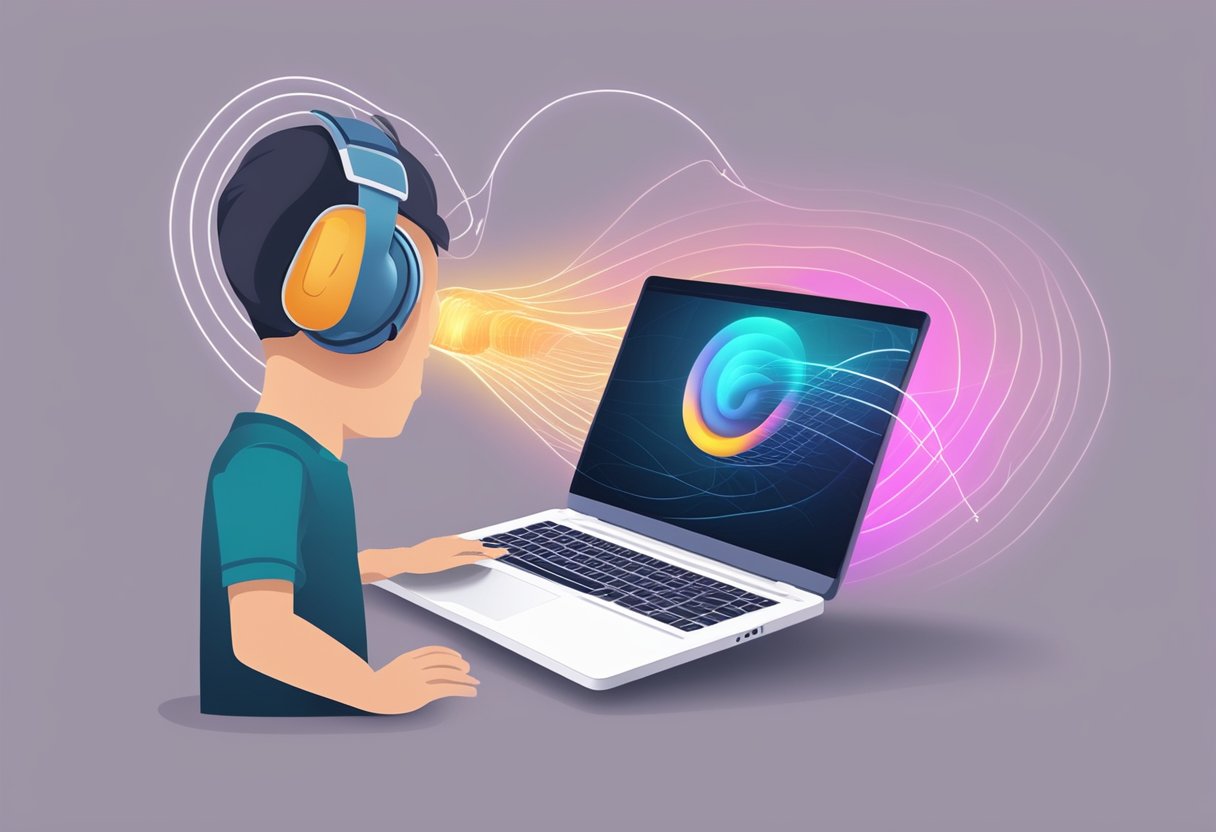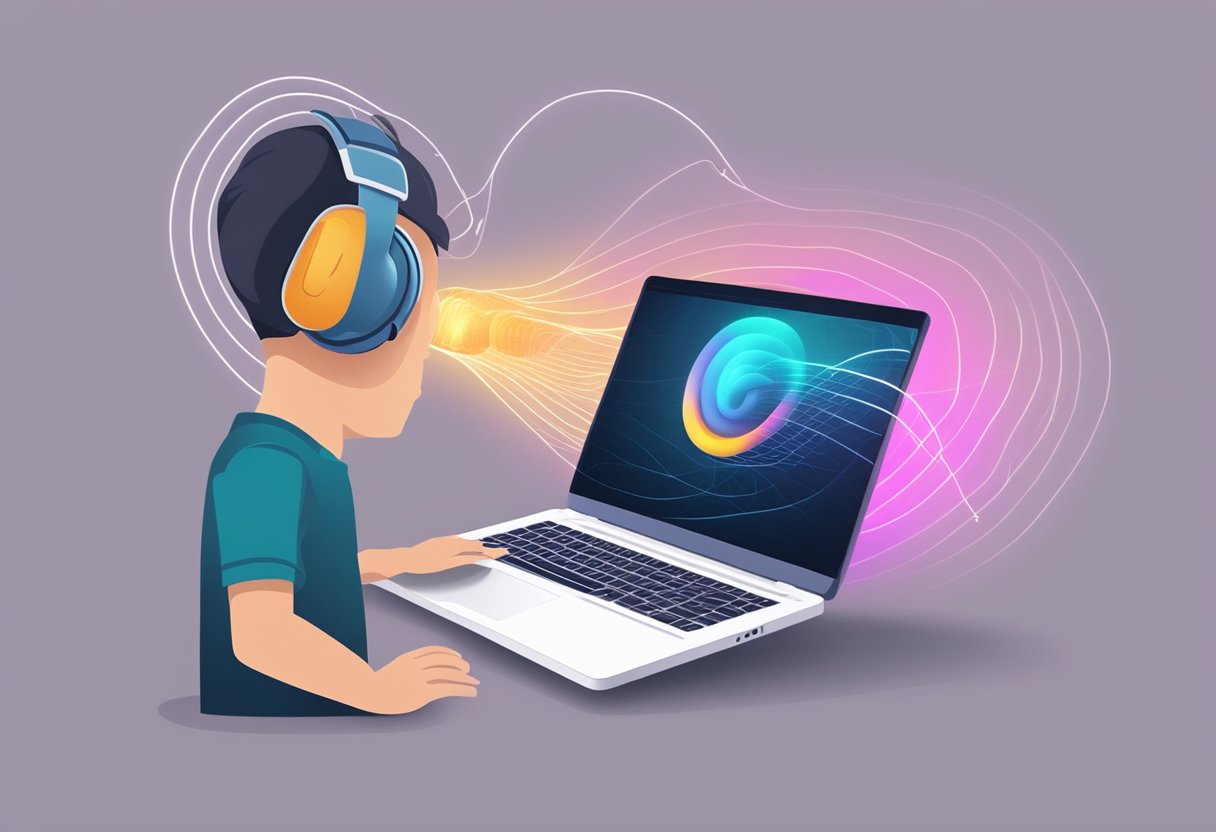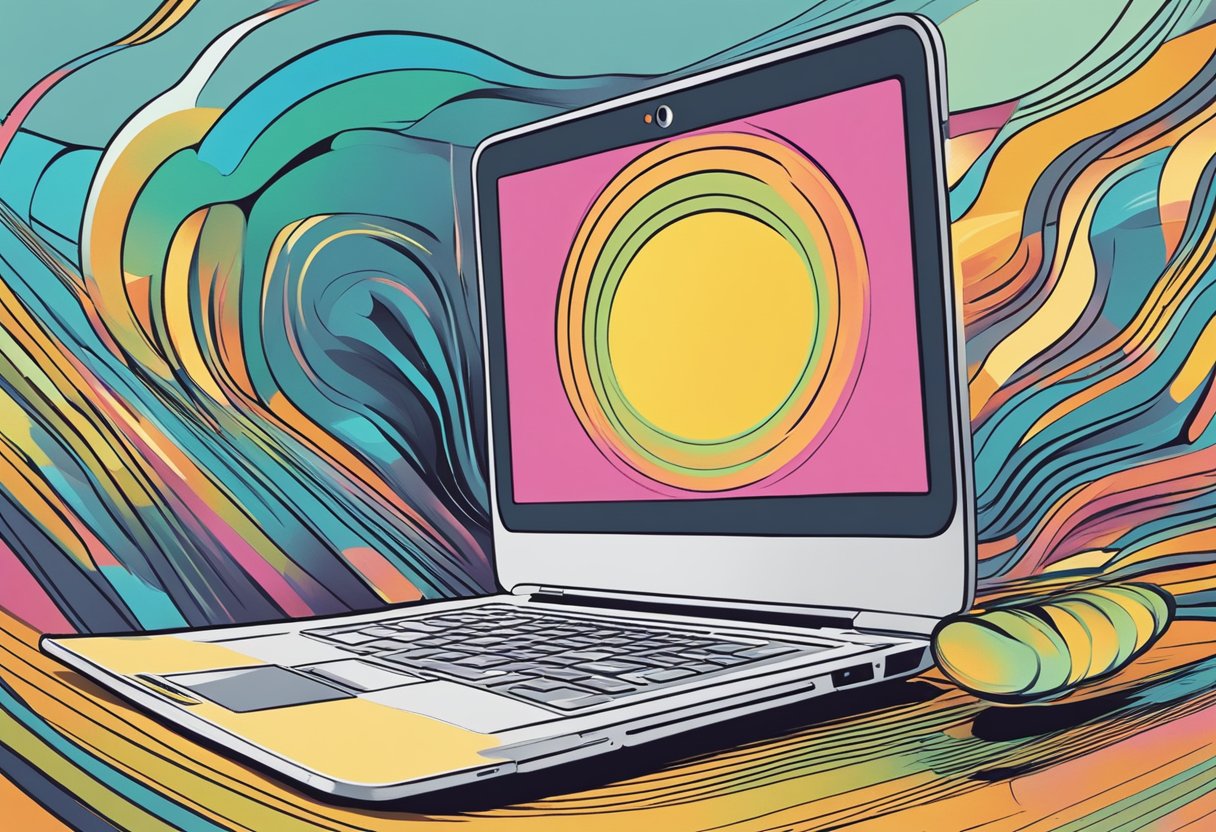
Tinnitus, characterized by a ringing or buzzing in the ears, is a condition that can be triggered by a variety of factors, ranging from exposure to loud noise to certain health conditions. In the digital age, where the use of electronic devices is ubiquitous, questions arise regarding their potential role in causing or exacerbating tinnitus. Laptops, commonly used for both work and leisure, are often subject to scrutiny due to their close proximity to users’ ears, especially when headphones or earbuds are used for extended periods.
Content of the page

While the primary causative factors for tinnitus include noise-induced hearing damage, age-related hearing loss, and ototoxic medications, the contribution of laptop use has not been heavily studied. However, extended exposure to loud sounds, even from laptop speakers or headphones, could potentially contribute to the development of tinnitus. The actual sound levels and duration of exposure necessary to pose a risk are key elements that require further exploration.
Experts recommend mindful use of electronic devices to mitigate potential hearing risks. They advise maintaining a moderate volume, taking regular breaks from audio-heavy tasks, and seeking ear protection when exposed to high decibel environments. These practices are especially relevant as prolonged exposure to sound at high volumes is a known risk factor for hearing issues, which may include tinnitus. By understanding the relationship between laptop usage and tinnitus, individuals can take informed steps to protect their hearing health.
Understanding Tinnitus
Tinnitus involves the perception of noise or ringing in the ears when no external sound is present. It affects a significant percentage of the population and can range from a mild nuisance to a debilitating experience.
Definition and Symptoms
Tinnitus is characterized by the sensation of hearing sound when no actual external noise is present. Symptoms include:
- Ringing
- Buzzing
- Hissing
- Whistling
- Humming
These sounds may vary in pitch and can be heard in one or both ears. In some cases, the sound can be so loud that it interferes with a person’s ability to concentrate or hear external sound.
Causes and Mechanisms
The causes of tinnitus are varied and often complex. They may include:
- Exposure to loud noise
- Earwax blockage
- Age-related hearing loss
- Ototoxic medications
- Ear bone changes
The mechanisms leading to tinnitus are not completely understood, but they involve a combination of:
- Changes within the ear
- Alterations in the way the brain processes sound
Damage to the hair cells in the inner ear can trigger tinnitus by causing them to send random electrical impulses to the brain, which may be interpreted as sound.
Laptop Use and Tinnitus
Tinnitus can be influenced by laptop usage, particularly through the mechanisms of sound exposure and headphone volume levels.
Sound Exposure from Laptops
Prolonged exposure to loud noise from laptop speakers can contribute to hearing damage and potentially tinnitus. The risk increases if laptop users frequently play audio at high volumes. Sound intensity is measured in decibels (dB), and extended exposure to sound levels above 85 dB can lead to hearing impairment.
Headphone Use and Volume Levels
Using headphones with laptops can exacerbate tinnitus risk if volume levels are not managed carefully. The proximity of sound to the eardrums and the type of headphones used (over-ear versus in-ear) can influence the likelihood of developing tinnitus. It is recommended for users to follow the 60/60 rule: listen at 60% of maximum volume for no more than 60 minutes at a time. A safe headphone usage table is provided for reference:
| Volume Level (%) | Maximum Duration (Minutes) |
|---|---|
| 60 | 60 |
| 70 | 50 |
| 80 | 40 |
| 90 | 30 |
| 100 | Less than or equal to 20 |
Maintaining moderate volume levels and taking regular breaks can help mitigate the risk of tinnitus from headphone use.
Prevention Strategies

Preventing tinnitus when using laptops involves adopting safe listening habits and considering the ergonomic setup of the workspace.
Safe Listening Practices
To prevent tinnitus through safe listening practices, it is critical to:
- Limit Exposure: Keep the volume at no more than 60% of maximum capacity and limit the time spent using headphones or earbuds.
- Use Over-Ear Headphones: Over-ear models can be less damaging than in-ear devices, as they distribute sound waves over a larger area of the ear.
- Breaks Between Uses: Take regular breaks, ideally a 5-minute cessation every hour, to reduce the overall exposure to sound.
Ergonomic Considerations in Laptop Usage
Ergonomics play a role in preventing tinnitus, and they include:
- Proper Screen Distance: Position the laptop screen at least an arm’s length away to avoid straining to hear or turning up the volume excessively.
- Maintain a Quiet Environment: Reduce ambient noise in the workspace, thereby lessening the likelihood that users will increase the volume to unsafe levels.
- Sound-Dampening Accessories: Consider using sound-proofing materials or white noise machines to maintain a quiet workspace without increasing the volume on the laptop.
Medical Considerations
Tinnitus is often a symptom rather than a disease, and its association with laptop use is typically due to the noise exposure from headphones or speakers. It is important to distinguish between temporary tinnitus from acute exposure and persistent tinnitus that may require medical attention.
When to See a Doctor
Individuals should consult a doctor for tinnitus if they experience:
- Persistent tinnitus that lasts more than a week.
- Tinnitus that becomes progressively worse.
- The sensation of tinnitus in only one ear.
- Tinnitus accompanied by hearing loss or dizziness.
Treatment Options for Tinnitus
Treatment for tinnitus depends on its underlying cause. Common treatments include:
- Noise suppression devices such as white noise machines.
- Hearing aids, if hearing loss is present.
- Medication to address specific causes or relieve symptoms.
When related to laptop use and noise exposure, limiting volume and ensuring quality ergonomic settings may help prevent the onset of tinnitus.
Research and Studies
Exploring the relationship between laptop use and tinnitus involves reviewing existing scientific literature and identifying links via empirical studies.
Scientific Research on Tinnitus
Scientific research on tinnitus has revealed it to be a symptom often associated with auditory disturbances. The potential causes are numerous and can range from exposure to loud noises to ear infections. Chronic tinnitus is characterized by a persistent ringing or buzzing in the ears, which can lead to significant discomfort and disruption in an individual’s quality of life. A variety of factors are considered in scientific discussions, including environmental exposure, personal health conditions, and use of technology.
Studies Linking Laptops and Tinnitus
When investigating the specific link between laptop use and tinnitus, studies tend to focus on aspects such as the volume of audio output and the use of headphones at high decibels. Research reveals that:
- Prolonged exposure to loud sounds through headphones can lead to noise-induced hearing loss, a precursor to tinnitus.
- Sound intensity: Using laptops at maximum volume, especially with headphones, significantly increases the risk for hearing damage.
- The posture and position relative to the laptop can affect one’s susceptibility to developing tinnitus, with some studies suggesting that poor ergonomic practices may contribute to tension and circulatory issues, which are potential underlying causes of tinnitus.
It should be noted that while these studies identify possible correlations, they often do not establish direct causation. Research is ongoing, and individuals concerned with such risks are advised to monitor usage patterns and consult healthcare professionals for personalized assessments.
Public Awareness and Education
Public awareness of the potential risks laptops may pose to hearing, such as tinnitus, is crucial. Educational campaigns focus on providing clear information about safe usage.
Key Strategies:
- Workshops: They organize events to teach users about the risks of prolonged exposure to loud noises from devices.
- Online Resources: Websites offer guidelines on safe laptop use and tips to prevent ear strain.
- School Programs: Integration of hearing health into the school curriculum raises awareness from a young age.
Targeted Information:
- Proximity: Keeping volume at safe levels; using external speakers
- Duration: Limiting continuous headphone use
- Signs: Recognizing early symptoms of tinnitus; seeking medical advice
Outreach Platforms:
- Social Media: Sharing infographics and quick tips for prevention
- Healthcare Facilities: Providing leaflets and conducting hearing assessments
- Corporate Wellness: Encouraging companies to educate employees on safe technology use
Education is a powerful tool, and with growing understanding, individuals can make better choices to protect their hearing.
Manufacturers’ Responsibility and Device Safety
Manufacturers have a critical role in ensuring that laptops are safe for use. They are obligated to comply with numerous international safety standards and regulations aimed at protecting consumers. Product testing, including sound level assessments, is essential to identify any potentials for harm, such as the potential risk of tinnitus from excessive noise exposure caused by the device.
- Design and Engineering: They should prioritize the integration of features that minimize noise output, such as quieter cooling fans and sound-dampening materials.
- Consumer Guidance:
- Clear instructions on safe use.
- Recommendations for appropriate volume levels and listening durations.
In terms of regulatory compliance, manufacturers must ensure devices meet legal decibel limits for sound emissions. Ongoing research and collaboration with health experts can provide insights into how their products could contribute to conditions like tinnitus, enabling further improvements.
Reporting and Transparency:
- Incident reports should be readily available and transparent to inform the public about potential risks.
- Updates on safety measures or product recalls must be communicated swiftly.
Customer Support: Effective support services can educate users on how to use their laptops safely to avoid auditory damage. Offering firmware updates or software options to monitor and control the audio output can lead to a safer user experience.
Through responsible manufacturing and the provision of comprehensive user guidelines, the industry can greatly reduce any risks associated with the use of laptops, including the potential for tinnitus.
Legal and Regulatory Considerations
When considering the relationship between laptops and tinnitus, one must be aware of the legal and regulatory frameworks that govern product safety and noise emissions. In the United States, the Occupational Safety and Health Administration (OSHA) prescribes safe noise exposure levels for workers. Although these regulations are designed for workplaces, they hint at safe sound levels that manufacturers may consider.
European Union directives, such as the Low Voltage Directive (2014/35/EU), cover electrical equipment including laptops. This directive ensures that electrical equipment within certain voltage limits provides a high level of protection for European citizens. It indirectly influences the safety standards related to noise emissions from the devices, thereby impacting the user’s exposure to potential noise-induced harm.
For consumer protection, the Federal Trade Commission (FTC) mandates that manufacturers do not mislead consumers about the benefits and risks of their products. If a laptop were found to potentially contribute to tinnitus, manufacturers must provide clear warnings to avoid legal repercussions.
Manufacturers must also adhere to voluntary standards, such as those by the International Organization for Standardization (ISO). The ISO publishes standards related to acoustic noise for IT equipment which may relate to preventing tinnitus. It should be noted, however, ISO standards are not legally binding unless adopted by a nation or region as part of their regulatory framework.
It is also vital that consumers are aware of their rights and the warranties provided by manufacturers which typically cover defects in materials and workmanship but might not address issues like tinnitus unless specifically included.
| Agency | Focus |
|---|---|
| OSHA | Workplace noise level regulations |
| EU | Electrical equipment safety |
| FTC | Consumer protection from misinformation |
| ISO | Voluntary standardization of product noise levels |
